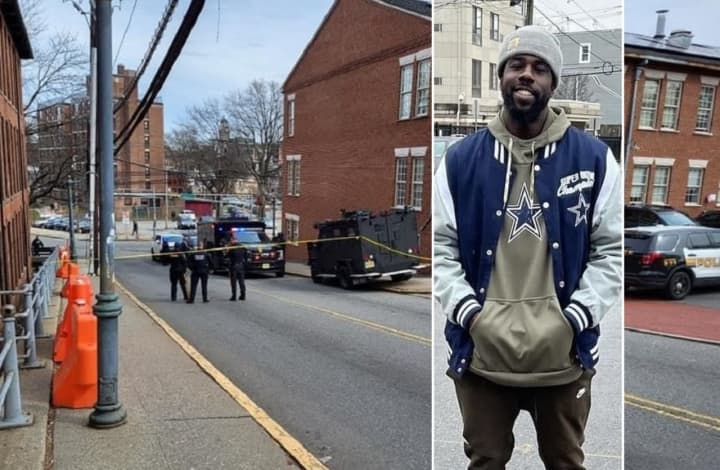Najee Seabrooks was pronounced dead at St. Joseph’s University Medical Center in Paterson shortly after the 12:30 p.m. shooting at an apartment near the corner of Mill and Edison streets on Friday, March 3, state Attorney General Matthew Platkin confirmed.
Although initial details remained sketchy, all agreed that Seabrooks was in a mental health crisis.
Officers initially responded to a report of an emotionally disturbed person who’d locked himself in a room at an apartment at 20 Mill Street and had set a small bathroom fire that was quickly extinguished.
The next thing anyone knew, Seabrooks had been shot by two of them.
Police converged at the hospital after a crowd formed after Seabrooks was rushed there. No incidents were reported, however.
Several civic groups and leaders accused city police of ignoring Seabrooks's emotionally disturbed state and allowing the situation to escalate before exacting a fatal solution.
It’s particularly painful to many that Seabrooks not only had survived street violence but had become a leader in trying to bring peace to the Silk City.
“He was a great mediator,” said Liza Chowdhury of the Paterson Healing Collective. “He did so much to help our youth.”
What Seabrooks did with inner-city youngsters was “life-changing, soul-saving kind of work,” political candidate Akkheem L. Dunham wrote.
“We knew or knew of him as a relative of a friend, as a son, brother, nephew, grandson,” Dunham added, “but to me the most important role I seen him as is a trendsetter!”
The New Jersey Violence Intervention and Prevention Coalition called Seabrooks a “beloved father, brother, and an invaluable member of our community.”
“Najee dedicated his life to reducing gun violence in Paterson and worked every day as a high-risk violence interventionist alongside his colleagues at the Paterson Healing Collective,” which is an arm of the coalition, the group said in an emailed statement.
“They have been working tirelessly for the past three years to bring safety and healing to the community,” the group said, “and Najee's death is a tremendous loss to this mission.”
It wasn’t more than Seabrooks’s death that’s shaken its members. It was the circumstances.
“It is deeply distressing to hear that, in the midst of a mental health crisis, Najee's team, his family, was not allowed to do the work they were trained to do. When he needed his community the most, he was denied the help he required, and the police response failed him.”
It’s all “a tragic reminder that there is still much work to be done….,” the coalition added. “We will honor his memory by carrying on the mission he dedicated his life to, and we will not rest until we have created a safer and more just community for all.”
Emergency Response Team members were called to the massive redeveloped brick building that was once part of a city mill early Thursday morning.
Healing Collective members also arrived and implored police to let them talk with Seabrooks.
The president of the Paterson Superior Officers Union, Detective Lt. Mason Maher, said negotiators talked Seabrooks into letting them in but then brandished a knife, leaving them no other option.
The officers, he said, “are suffering, too.”
Others saw things differently.
“Execution by a police firing squad for being barricaded in your own home is incomprehensible,” said Ryan Haygood, president & CEO of the New Jersey Institute for Social Justice.
“This tragedy could have been prevented with compassionate, skilled attention that was present and available,” Haywood added. “The rejection of that care is in itself a form of police violence and a compounded assault on a Black life.
“We’ve said the words before – tragic, unnecessary, racist, devastating. “But without accountability, we will be saying those words again – and again – and again.”
Platkin, the state attorney general, said his office is reviewing the incident -- as it must, under state law, whenever someone dies in an encounter with police.
Strict guidelines guarantee the investigation by his Office of Public Integrity and Accountability (OPIA) is conducted “in a full, impartial and transparent manner," removing politics or personal agendas.
The results are then presented to a grand jury.
The grand jury reviews a host of evidence -- including witness interviews, body camera video, and forensic and autopsy results -- to determine whether or not there was cause to suspect any wrongdoing on the part of law enforcement.
Seabrooks’s family will have an opportunity to review any video and/or audio recordings from the time of the 911 call through the entire incident before these are released to the public.
Click here to follow Daily Voice Northern Valley and receive free news updates.


